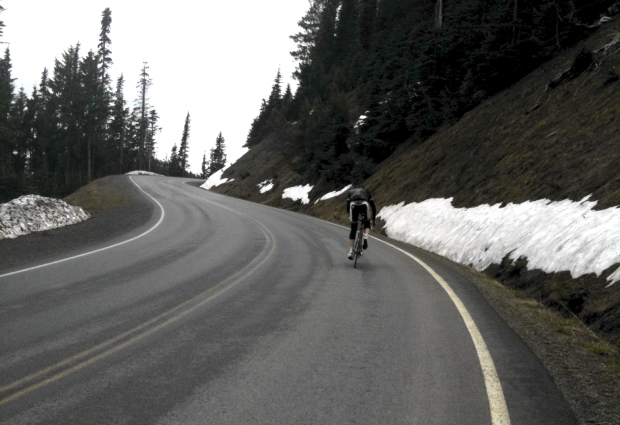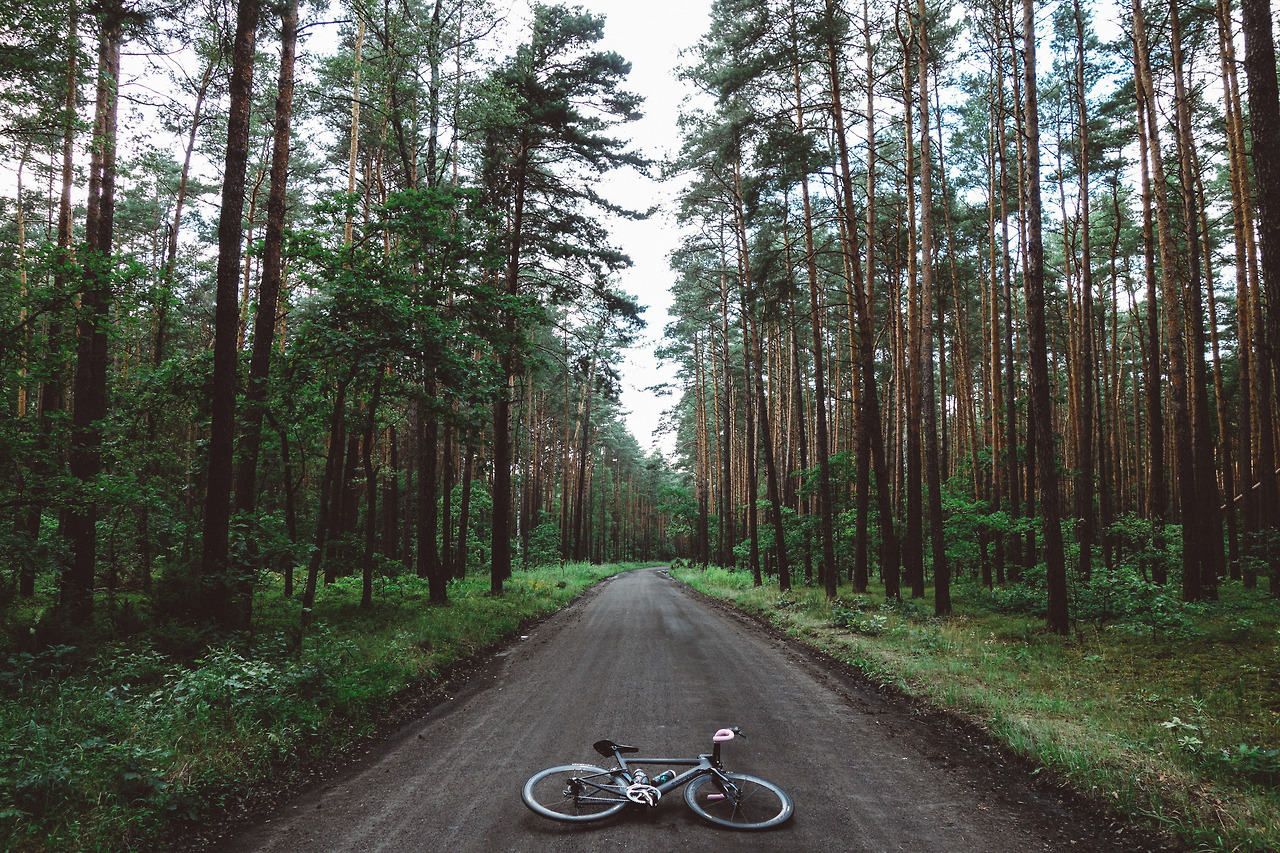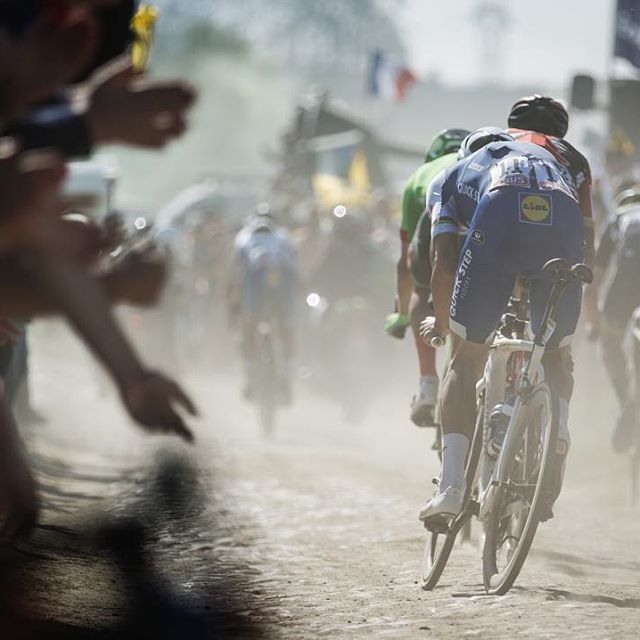La Vie Velominatus: Optimism

If I were a pessimist, or a realist for that matter, I wonder if I might have started any of the various activities which have brought me the most pleasure and satisfaction. Though I have Cycling in my mind when I make that statement, this principle expands beyond the vast and il-defined borders of La Vie Velominatus: everything worth doing takes time, work, and commitment in equal measure, and that fact can be daunting and intimidating.
Invariably, it is my poor estimation of effort combined with my vague memory of pain and discomfort which affords me the greatest character trait I possess: optimism. In the face of all reasonable likelihood of failure, in spite of the hopeless amount of work something might prove to be, I invariably believe that success is not only possible, but inevitable. (This trait might also be classified as arrogance or stupidity, but I don’t like the sounds of those as much because they would require more introspection, and that sounds like work.)
It is with this frame of mind that I cheerfully tackle most any activity, in my life and on the bicycle. While I haven’t conducted a poll of any kind, I have informally received sufficient unsolicited and often shouted feedback to allow me to surmise that this approach is not always as liberating for those participating in the activity as it is for me. Be that as it may, and as has oft been observed in these archives, our chosen sport is one rife with suffering afforded by long days in the saddle which allow us to suffer more intensely and for longer days in the saddle in the future. Every element of this sport revolves about axes of sacrifice, dedication, and patience. Training, certainly. Diet and weight loss as well. Even learning the subtleties of maintaining our equipment properly takes years in the tutelage of a Cycling Sensei. These are long journeys that build on small gains over time; there is no magic potion that one can imbibe to be transformed from portly oaf into elite cyclist – much less so a Velominatus.
If, on a winter morning, I had the slightest appreciation of the intensity of the cold I would feel eight or ten hours into the ride, I might never set out on it; it is my optimism that I will enjoy the ride that allows me to experience the insular nothingness of The Tunnel.
If, as I point my bicycle towards the hills instead of the plains, I had a clear memory of the suffering it caused me previously, I might never become a better climber; it is my optimism that I can overcome my size and weight to master the terrain I love the most and am comprehensively il-suited to travel.
If, at eight years old, I’d had the slightest idea that I would be almost 30 years into my journey and only just beginning to develop some of the most rudimentary elements of experience, strength, knowledge and passion that Cycling delivers to us, I would perhaps never had started. Yet it was my optimism that these things would come that has allowed me to experience this wonderful journey.
Optimism is what allows the mortal to start down the path laid by the immortal. Vive la Vie Velominatus.


@farzani
any good cycling specific programs you can suggest? I was told that weight training for the legs was not good during race training as your legs never get a chance to recover properly and you just put micro tears into your muscles which don’t heal. Is that the same for core and back? Can core and back exercise be done as rest day alternatives? Any tips would be helpful.
I damaged a disk about three months ago and the specialiststaid exactly as you indicated that my lower back was weak. I have now been told to start building it up now that it has healed.
@Dr C not Kuiper’s quote sorry. That’s from The Rider by Tim Krabbe. Compulsory reading.
@mcsqueak
Speaking of only cycling, I’d say it has been my main athletic/exercise pursuit for around nine years now. I do play futbol twice a week, so not that worried about bone density. However, I realized the other week that my muscle mass is finally starting to wane. From years of competitive sports, then four years of college sports, plus the requisite weight lifting, I had pretty good overall strength. Not anymore. I guess ten years of not touching a weight will do that. Since I pick up new things all the time, I don’t have any desire to look like Twiggins.
To fix this situation I jogged down to the local Vita-Course last week with the VeloDoggie. I tried to do three sets of abs, arms, back, chest…Nope! Couldn’t do three sets in twenty minutes. Fucking piss poor. I used to lift weights a few times a week for an hour! Ugh, I’m kind of annoyed, but I guess ten years off will do that.
Anyway, I’m adding some light weight training (see: using a dumb bell I found while out…cycling plus a kettle ball I made from an old bowling ball) to do a circuit a few times a week. I’m determined to get some decent muscle mass back in my upper body.
@Adrian
I suggest you find an educated trainer who is competent in sports specific strength and conditioning and understands the concepts of periodization. Hopefully one who bikes.
You are correct, a good program should be done :”pre season” depending on what races you want to target/peak for.
there should be distinct phases broken up as well as methodically progressive to include a base.strength and power phase. I include some plyometrics in the last phase.
All the while form and assessment of weakness should be addressed first. dynamic and functional exercises that focus on core strength are integral and one can use bodyweight in addition to all the “stability toys” out there. I integrate kettlebells, yoga and pilates movements and concepts to optimize dynamic flexibilty and stability. Movements should be able to transfer to find core stability and strength on the bike.
During race season, maintaining a basic core routine in addition to some fascial release (using a foam roller) can be done as much as time and energy allows.
Utilizing all planes of movement are important for gaining functional strength.
Hope this helps!
@farzani
Have you read the Cycling Training Bible by Joe Friel? He goes through all that. I was recommended it by someone I know.
@DerHoggz yes, I have read it. However his expertise is in periodization for cycling blocks not strength training. I have found that most books on “Strength training for cycling” lack. they give the basics but many of the exercises are “stock” even out dated. I am not a fan of machines and prefer free weights/body weight etc.. therefore we can see if there are flexibility and or structural issues. In addition you can also address right side left dominance etc..
Besides bone density issues that can occur if someone is ONLY cycling, one can increase overall power from a well structures and performed S&C program. Olympic lifts and Olympic lift warmup drills are perfect for stimulating neural responses for accelerations and sprints. these can be done with ketlebells as well as traditional barbells
great off season training which got me 5th place (age group) in the 2012 Marmotte..
I bloody love this site.
Every now and then i get a little bit down about failing to live up the the ideals of the Merckx, particularly after inflicting back pain on myself last Sunday (still hurts to walk) whilst pushing hard uphill. This sport can knock you back and down, but Franks’ article has made me even more determined to get back on the bike and ride harder as soon as my back allows.
@farzani
Thanks for the advice. The problem I face is that I live in a country where an educated trainer,especially one who understands bikes is very hard to come by. Most trainers do a simple fitness first course for a couple of weeks and then sell themselves as a competent trainer. Add an arthritic knee to the mix whereby i can’t do all the usual traditional exercises so strength training becomes a challenge.
I’ll keep looking around for a good trainer.
@Adrian where do you live? Send me a private message @chafer3364@mypacks.net and maybe I can steer you in the right direction :)
@farzani
Please tell me what the “foam roller” is. Does it go on my rollers to make it seem like a 30% gradient? I’m not being facetious, I should probably look up “fascial release”, I’ll do it now.
@farzani
It’s OK I found it, self massage tool (simplistic) which sounds great as I don’t have my own soigneur.
@snoov
if you’re at work, please spell that very carefully.
@Chris
Um, I have no clue what you’re on about. I’ll ask the VMH if she knows what it is!
ps Self employed joiner just popped into my office (in my flat) while waiting to meet a client.
I use a foam roller for my IT band injury…it does wonders!
@Chris hahaha
@snoov fascia is the connective tissue surrounding all muscles and needs deep tissue pounding to loosen. Studies are showing that fascia has a greater role in ROM (range of Movement) as well as warming up muscles.. there seems to be neural innervation when stimulated.
@Sauterelle Can I have a witness! I tell all my clients and friends….it is a MUST
@farzani
Absolutely right on all counts here. I concentrated on weight- and core-training from January through March (with less riding). Lots of kettle bell work and squats with free weights. While my cardio was a little later in coming back (compared with other years when I rode more earlier), I was noticeably stronger. And how! While my weight remained constant, I was drawing a lot more power on the bike. Toward the end of March, while I tried to maintain the weight regime and ride a little more, I was fatigued, but the transition from weights to cycling worked out fine.
Core and dynamic stretching through the whole year, though I might try to fit in a bit of yoga this winter to combine with the weights.
@Steampunk Glad to hear it! In Belgium it is TOUGH to ride in winter so I drew myself a 3 month periodized S&C plan that I did 2x per week, taught 3+ core training circuit classes, time on the rollers as well as got out when I could.. (icy roads not fun)
I was pleased with my overall strength. As far as my S&C work, I am not afraid of heavy weight and because I have enough muscle mass (my body tends to be mesomorphic) I use very little rest periods (if any) I superset and my endurance stays high. If I wear my HR monitor (esp) with Olympic lifts I see a jump in 60 beats or more in less than a minute. Great off the bike interval training.
Yoga and Pilates are great as well to keep the muscles lengthened. kettlebell windmills are a fantastic strength/core and dynamic flexibility exercise.
@farzani
I refer you to your “countryman”:
Rule #5, missy. And if you live in Belgium, surely you’ve heard of a cyclocross machine?
@frank OH I DID TRAIN IN 0 TEMPS !!! but when there was ice and snow on the ground, I lost all Flandrian points. Remember I am old enough to be Devolder;s Oma, Mijn karacter is heel sterke maar geen stom :)
and I am a veldrijden looooooooser. Ik woon naar Cricuit Zolder. Daar staat Werldbeker op 26 Dec. BRRRRRRRRRRRRRRR
@farzani
You’re right about the HR jumps in strength-training. I managed to work up an incredible sweat in workouts that lasted well under 45 minutes. Endurance was fine; I merely meant that getting back on the bike was very clearly an alien activity in relation to the gym.
@frank
If I can see the road, I’ll ride.
@frank all 270 km in het regent,donder en hagel. Luik Bastaneke Luik.
@farzani
Oh, very very good. Everything but the YJA, but I’m sure you’ve already replaced that since beginning your Enlightenment.
Are those Enve’s? How are they?
@frank Ik heb mijn normal regent jas verloren dus de geele. nu, heb ik veranderd. hahaha. would have worn a garbage bag that day.. no Enve’s..ridley Forza…
@farzani
That’s a beautiful photo. And I’m not just saying that because I have a Belgium-colored liver next to my name.
PS: I need to ride more in places with barbed wire (or bob wire, as we used to say in Texas).
Do we have a lexicon entry yet for the feeling you get when you pull open your cycling gear drawer and see your winter gear in the middle of summer & have no damn clue how you manage to pull all that stuff on?
Just came back to this article because it’s so fucking great.
Isaiah 53:11 (not making that up!)
@Steampunk +1+1+1
@Ron
I think we usually just call the “depression”.
I REALLY, really… don’t want to log any more time on my turbo. But I know the day will come when the clock will click back an hour, and it won’t be light enough to ride after work.